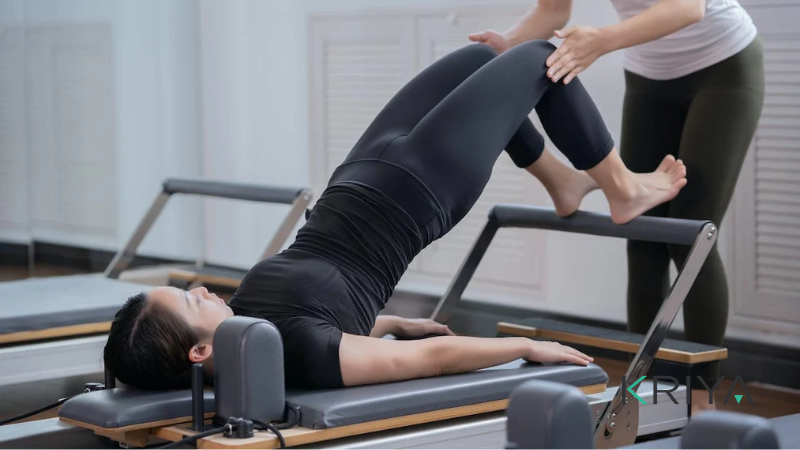
Which Type of Pilates Class is Best for You?
The Evolution of Movement: The Pilates Journey
A revolutionary fitness method was taking shape in the bustling streets of early 20th-century New York. Joseph Pilates, a German emigrant, was crafting a sequence of movements to transform how people approached physical well-being.
He envisioned a system that didn’t just focus on isolated muscles but embraced the body as a holistic unit, emphasizing coordination, balance, and breath. Today, Pilates is more than just an exercise regimen; it’s a testament to the limitless potential of the human body and mind.
As the popularity of Pilates has soared, so too have the varieties of classes, each offering unique techniques and benefits. Whether you’re an avid fitness enthusiast or just dipping your toes into the world of exercise, there’s a Pilates class tailored just for you. So, the burning question arises: Which type of Pilates class is best for you?
A friend recently opened a Pilates studio. Decked with the latest equipment and skilled instructors, the studio is a fusion of tradition and modernity, even in its registration process. When I asked him about his hopes for his studios, he smiled. His main goal? To run Pilates classes. He has loaded the studio with new types of equipment, hired Pilates instructors, and has done all decorative methods for the studio to look attractive. He’s considering the KRIYA booking software. However, he currently leans traditional, having customers manually fill out forms and register.
Pilates, as a fitness regimen, spans a diverse range, from classic to contemporary subclasses.
Many of his clients were eager to know what equipment is used, what the latest fad classes are offered at the studio, and how much each class costs! Some Pilates students who knew the basics were eager to join classes according to their needs and requirements.
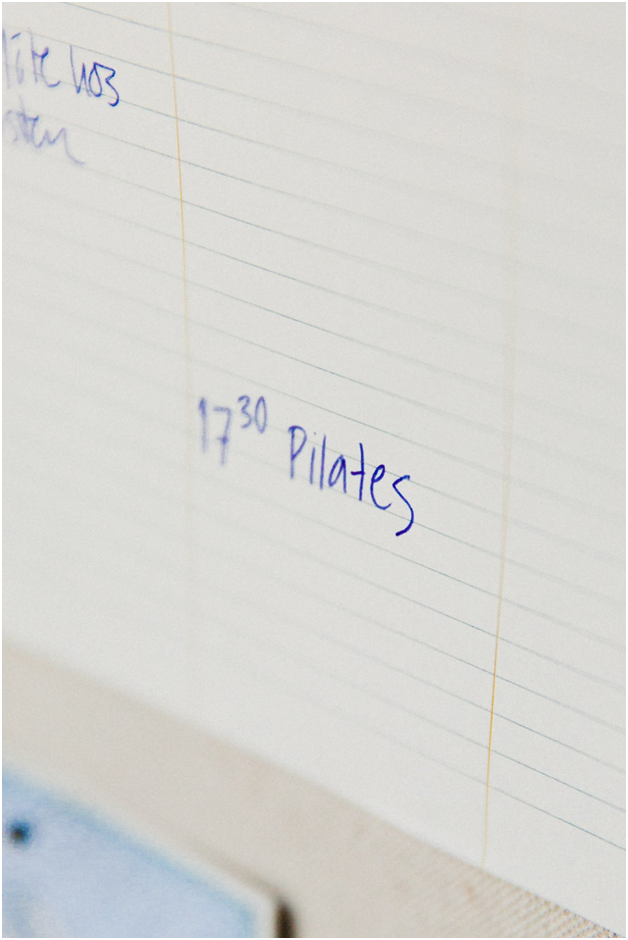
It is noted that Pilates can be differentiated based on the number of students in a ‘class’ or whether it is a recipe-based repetitive program, a group class that varies week to week but is identically performed by all, or an individually prescribed program unique to that client and that session.
So, if you are looking forward to joining a Pilates class, understand what class will best suit you. To do this, you need to know the differences and commonalities between the types and styles of Pilates available at a Pilates studio.
Different types are more suited to different goals; some may achieve your goals faster than others as example of losing weight. Understanding the differences can also help you appreciate the cost of certain classes.
Types of Pilates
There are many types of Pilates, all differing in their approach and effectiveness. From Mat and Reformer to Studio and Clinical, the options can be confusing, and it can be hard to know which Pilates is best suited for your specific fitness goals.
Also, remember that no matter what form of Pilates you choose, the basic principles will always remain the same—breathing, control, centring, and flow. The difference is only in the way they are performed and the health benefits they offer.
Classic Pilates
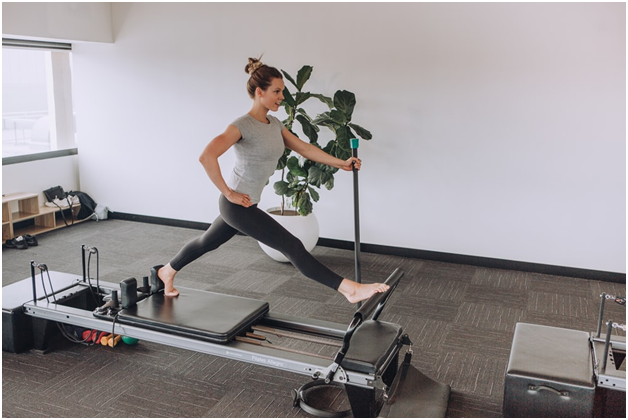
Classic Pilates is rooted in the original form developed in the 1920s, focusing on mat and equipment workouts. Having established the roots of Classic Pilates, let’s delve into one of its foundational forms: Mat Pilates. It is a combination of both mat and equipment workouts.
This is a slightly more complex type of Pilates as the muscles of your entire body are involved in it, but best of all, it helps to strengthen your core and other body muscles and also simply uses Pilates equipment as a tool to treat a specific injury.
Mat Pilates
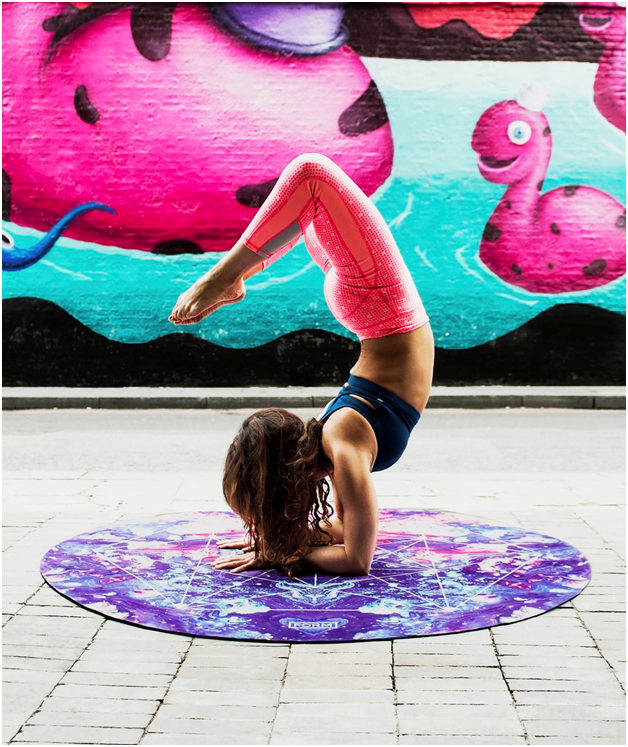
This is one of the most popular Pilates exercises performed by people worldwide. You don’t need complex equipment to perform this exercise; only a mat is needed.
While Reformer Pilates presents an advanced setup with its unique equipment, there’s also Clinical Pilates, which delves into specialized areas. This is the basic form of Pilates, and everyone who wants to include Pilates in their daily routine first has to start with mat Pilates, and then they move forward to other forms of Pilates.
Mat Pilates was the way Joseph Pilates originally began teaching his specific routine of movements, which involved little to no equipment. While Mat Pilates is accessible and often taught in large groups, another intriguing approach is Reformer Pilates.
While Mat Pilates focuses on foundational movements, Reformer Pilates introduces equipment for a more challenging workout.
Reformer Pilates
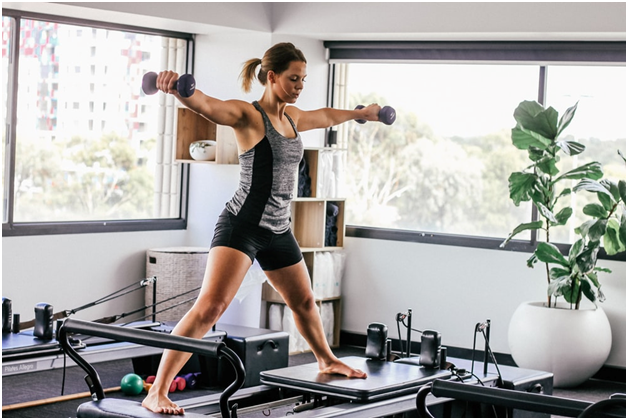
This form of Pilates is quite challenging compared to the previous one. Some exercises performed on the reformers are the same as mat exercises, just that they are performed on the reformer—a piece of equipment with a flat platform that can slide back and forth and an adjustable bar for resistance. Reformer Pilates is more advanced than Pilates and should be done only under proper guidance.
If you join large classes of 8 to 30 people, it will be fun and energetic, will have you working up a sweat, and are great for improving general fitness.
Moving from the challenging dynamics of Reformer Pilates, Clinical Pilates offers a therapeutic approach.
Clinical Pilates
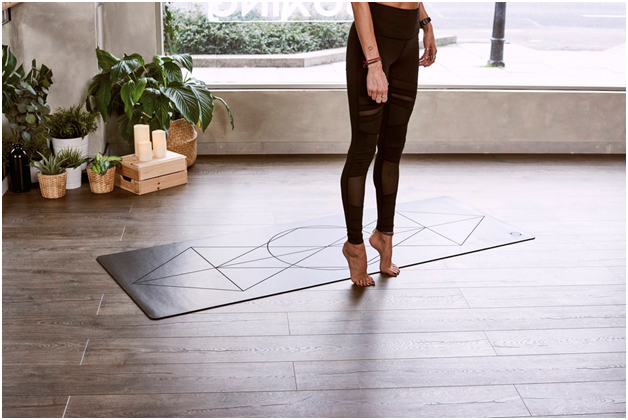
Clinical Pilates can be considered a subset of Contemporary Pilates. This form of workout involves mat work and props like the band or studio equipment. Clinical Pilates focuses on stabilizer muscles and addresses lower back pain.
Conversely, Contemporary Pilates blends traditional and modern techniques. Dynamic physiotherapy assessments are also required to establish directional preferences and functional diagnoses.
While Clinical Pilates focuses on specific therapeutic needs, Contemporary Pilates blends the old and the new, offering a diverse experience.
Blending Traditions: Contemporary Pilates
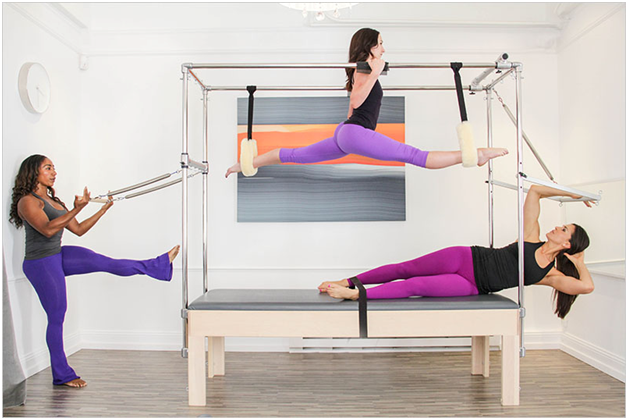
Contemporary Pilates combines the classical form originally created by Joseph Pilates with some contemporary variations and physiotherapy. This fusion, along with the fact that classes are run as private or semi-private with a maximum of 4 people, makes Studio Pilates an extremely individually focused and powerful form of exercise.
These moves are twisted as per an individual’s requirements on the spot for the best outcome. Here, Pilates is taught in fully equipped studios under expert instruction and is seen by many as the most comprehensive style, catering to everything from rehab and sports training to general fitness and pregnancy.
During your class, expect to see teachers inventing and modifying exercises on the spot to achieve the best outcome for their students. They will utilize the full range of Pilates equipment, including the Trapeze Table, Wunda Chair, and barrels. While such specialized classes might have a higher cost, there’s a wide variety of other Pilates class types to explore.
Beyond the classic and contemporary, there are several other Pilates class styles, each offering its unique twist
Other types of Pilates classes
A few other types of Pilates classes are:
Group classes
Group Pilates classes where you can find 2 to 50+ students in each class. Group classes are usually mat classes, but reformer group classes called allegro classes are also common.
The defining feature of a group class is that all the participants perform the same or similar exercises, usually in time with one another or sequence, as with circuit classes.
One instructor demonstrates/cues/corrects the exercises. Group classes have limitations: The exercises are generic, and the instructor has a limited ability to correct individuals. One interesting aspect is that group classes are cheaper and more social.
Private classes
Almost all Pilates studios offer Private or semi-private classes. Such classes can be of 1-6 people, and the student receives a lot more attention and guidance from the instructor. Depending on the style of Pilates, private Pilates classes are often composed of a unique program of exercises created specifically for the students and vary from class to class. However, note that private Pilates classes are a bit costly.
Other variations include group reformer classes, group chair classes, and circuit classes. These classes usually have fewer participants than mat classes.
While many of these classes use Pilates in their name or description, other Pilates studios go by the class name, equipment used, or Pilates-style exercises in them or apply the principles of Pilates to other forms of exercise.
- Barre Pilates offers Booty Barre and Xtend Barre classes, which combine ballet barre work, Pilates exercises, and cardio.
- Piloxing as the name says it all, is the unlikely combination of Pilates and boxing
- Body Balance is a Les Mills class that combines tai chi, yoga, and Pilates choreographed to music.
- Yogalates, as the name suggests, is a mixture of yoga and Pilates
While the quality and resemblance to traditional Pilates can vary among these classes, the equipment used plays a significant role. Let’s examine the tools you might encounter in a Pilates studio.
Having explored the various types of Pilates classes, it’s essential to understand the equipment that aids these exercises.
Tools of the Trade: Pilates Studio Equipment
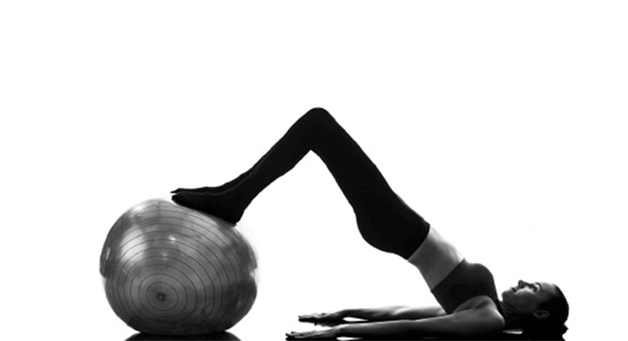
If you visit a Pilates studio, you will find so much equipment at studios. Studio equipment is usually used as part of a Pilates class. The main traditional pieces of studio equipment are the reformer, trapeze table (aka Cadillac), chair, spine corrector and ladder barrel. Many other variations include baby arcs, ped-o-pul, reformer/trap combos, wall units, and Rael Isacowitz`s Avalon system.
While most people assume that using studio equipment equates with increased complexity or difficulty, Joseph Pilates originally designed it to teach people exercises that they were unable to perform on the mat.
Most of the equipment uses springs as resistance. This can make the movement easier by assisting or increasing the challenge by resisting it. Changing the amount of spring resistance may also be used to change which muscles are recruited.
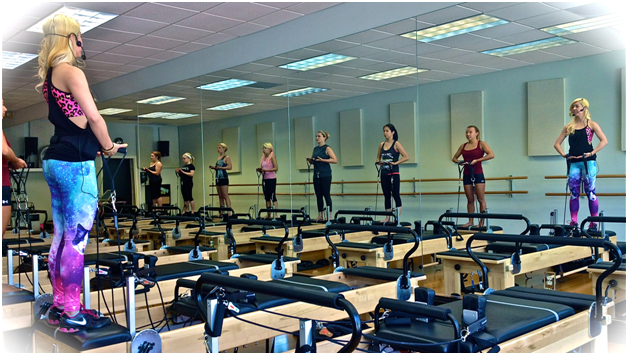
In Pilates, you can use a myriad of small props, such as the magic circle, foam roller, Swiss ball, chi ball, theraband, etc., which add variety to the network and can be used with much equipment.
Most props are designed to either add resistance eg. theraband, magic circle, or challenge stability eg. foam roller, swiss ball. Some can also be used as a self-massage e.g. foam roller, franklin ball. Small props are usually cheap enough for students to purchase for home use.
Comparing the Costs of Pilates Classes
The price tag associated with a Pilates class can often be influenced by various factors – the type of class, equipment used, instructor expertise, location of the studio, and class sizes, among others. Here’s a general breakdown to give you a clearer idea:
- Mat Pilates Classes:
- Group Sessions: These are generally the most affordable option. Depending on the studio’s location and prestige, prices can range from $15 to $50 per class.
- Private Sessions: One-on-one attention means higher prices. You could expect to pay anywhere from $50 to $150 per session, varying costs based on instructor experience.
- Reformer Pilates Classes:
- Group Sessions: Given the equipment involved and the specialized instruction, group reformer classes tend to be pricier than mat classes. Rates often range from $25 to $75 per session.
- Private Sessions: Personalized attention on the reformer can cost between $60 to $200 per session.
- Clinical and Contemporary Pilates Classes:
- Group Sessions: Due to the therapeutic nature and specialized equipment, group classes can range from $30 to $85.
- Private Sessions: A more individualized approach, especially for rehabilitation, can cost between $70 and $220 per session.
- Specialized Classes (e.g., Barre Pilates, Piloxing):
- Prices vary widely depending on the class’s uniqueness and the equipment used. On average, you might expect to pay between $20 and $70 per session.
- Studio Memberships and Packages: Many studios offer packages or memberships that can significantly reduce the per-class cost. For instance, a 10-class package might offer a 10-20% discount compared to drop-in rates. Similarly, monthly memberships can provide unlimited classes, making them a cost-effective option for regular attendees.
Additional Considerations:
- Some studios offer introductory rates or first-class free promotions for new clients.
- The studio’s location plays a significant role in pricing. For instance, a class in a metropolitan area or upscale neighbourhood might be pricier than one in a suburban locale.
- The instructor’s experience and certifications can also impact the cost. A well-renowned instructor or a class with a specialized focus (e.g., prenatal Pilates) might come with a premium price.
Which type of Pilates is best for you?
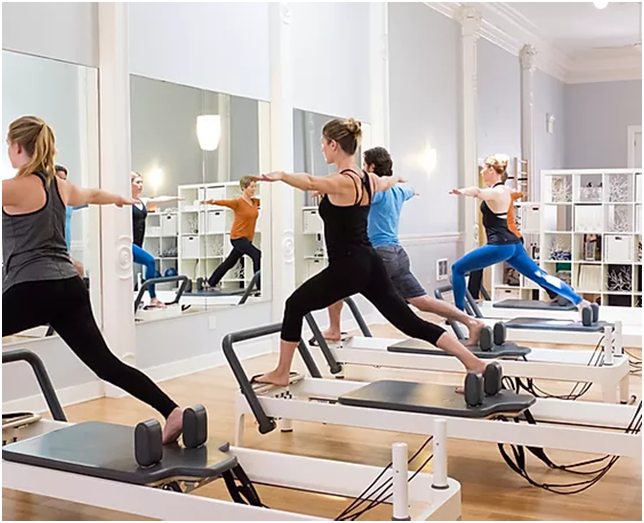
Incorporating Pilates into your fitness regime can offer numerous benefits. But how do you determine the right type for your needs? Let’s summarize:
Goals and Benefits:
- Pilates, with its various forms, addresses different fitness goals, from muscle toning to stress relief.
- Studies, such as the one published in the Journal of Bodywork and Movement Therapies in 2018, have shown classical Pilates to be an effective tool for rehabilitation, particularly for chronic neck and back pain.
Expert Suggestions:
- Christina Pabon, a certified instructor from Life Time Athletic in Columbia, Maryland, suggests options for lean muscle development and weight loss. For instance, reformer classes or Stott Pilates Jumpboard classes integrate a jump board with the reformer to maximize calorie burn.
Choosing a Class:
- Your personal preference plays a significant role. Whether you prioritize mindfulness over equipment or vice versa, there’s a Pilates form tailored for you.
- Remember, instructors bring their unique touch to Pilates, adding a personalized flair to each session.
- No matter your choice, ensure that your Pilates workout is part of a holistic health and fitness plan.
In conclusion, while the variety of Pilates classes might seem overwhelming, understanding your goals and consulting with experts can guide you to the right fit. Embrace Pilates’s diversity, and find the style that resonates with you.
